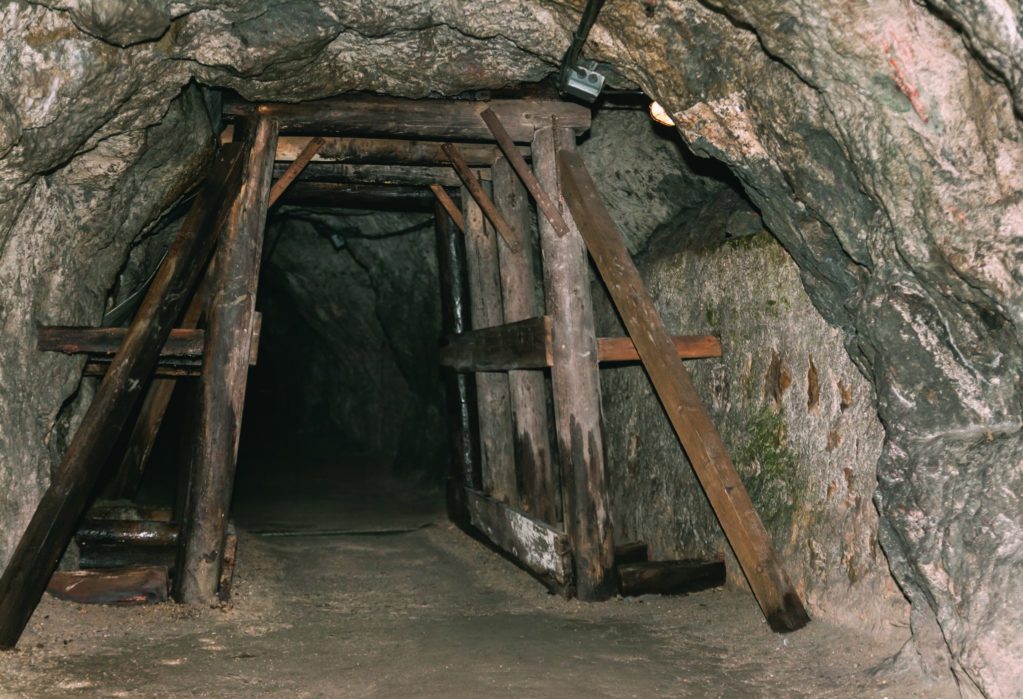One lazy Sunday in March 1886, on a farm in Langlaagte in what is now Johannesburg, Australian gold miner, George Harrison, stumbled upon a rock by a stream that contained gold. He declared his claim to the then government and soon after the area was declared open for mining – the ‘Witwatersrand Gold Rush’ began.
The gold rush built Johannesburg and made fortunes, these days poverty is the spur. Illegal gold mining is the running sore of the industry today. Poverty recruits illegal miners to live and work in dangerous abandoned shafts. What they find is worth much more then what their unknown employer pays them. Those that risk their lives in the dark and dusty underground call themselves Zama Zama (taking a shot at fortune).

Illegal miners have no rights to mine, but feel that the act is a victimless crime. They believe there is nothing wrong with doing what they are because they are entering the abandoned mines on their own, risking their own lives.
Illegal mining in South Africa is on the rise.
Loading...
“There is very limited access and control to what is actually happening underground and very limited control over the access points because we simply don’t know where they all are. And even if we do know, in some instances the mine would pour concrete into a redundant mine shaft, like a plug. But the guys (illegal miners) will mine right next to it, they would dig down around the concrete block and access the mines,” says Ben Coetzee from the Institute for Security Studies.
Illegal mining used to have little impact on legal mining but illegal miners have now moved into working mines. Sibanye Gold CEO, Neal Froneman, says illegal mining is turning into war. His mine was once sabotaged by illegal miners over Christmas and he even admits that some of his own miners have mined illegally on their days off.
“It’s a major problem, not only in abandoned mines but also in working mines. They have become very arrogant, they’re very organized, they are armed, they are aggressive, they threaten employees and blackmail them and they are replaced very quickly. You can arrest guys (illegal miners) and they are back tomorrow or somebody else is back tomorrow,” says Anton van Achterbergh, the Head of the Legal Department at the Chamber of Mines of South Africa.
Illegal gold mining is easier than you might think.
“Gold is visible and you can find it underground. Whenever there is an explosion, there will be gold dust that will accumulate on the ground or on the floor in the tunnels and there is always water in a mine, so it effectively rinses out the dust. In many mines the gold is actually laying where people are walking,” says Coetzee.
In South Africa it is illegal to be in the possession of raw gold. The syndicate chain of illegal mining has found a very simple and effective way of trading the stolen gold. Shop owners licensed to buy and sell a certain amount of gold, buy legal gold. They then buy illegal gold and refine it – which is very easy to do – and then mix it with the legal gold. This process makes it almost impossible to identify the illegal gold. Each nugget of pure gold has a unique fingerprint that identifies the origin of that gold. When you mix it with gold from all over the world, that fingerprint gets lost.
Illegal mining is driven by a large syndicate chain. This chain consists of five levels. The first level is the illegal miners, most of them immigrants. The second level is the buyers of the gold, who also recruit the illegal miners and provide them with tools. The third level sells the gold regionally. The fourth level sells nationally and the fifth level is the international buyers and distributors.
Border jumpers dominate illegal mining. According to the Chamber of Mines, 70% of all arrested illegal miners are illegal immigrants.
“If we can solve the illegal immigrant problem, illegal mining will go away, roughly,” says Van Achterbergh.
Another issue is the weakness of the law.
“In South Africa, to be charged with theft of something, you need to be caught with the possession thereof. When the guys (illegal miners) hear you coming they run away, so how do you prove they were stealing? Same as on the surface illegal mining, unless you find the gold in their possession it is very difficult,” says Van Achterbergh.
He says there have been many efforts to educate prosecutors about the theft of precious metal, allowing them to charge illegal miners for more than mere possession. Despite these efforts, there are holes in the justice system.
“I always tell the police the prosecution is as good as the investigation. If the investigation only shows so much, then what can I do if it only shows trespassing and not illegal mining?” says Anthea van der Byl from the National Prosecuting Authority.
“Police are afraid to go into these places. I would say it needs an international intervention, not just national.”
Police are also frustrated.
“It is a futile exercise, one might say, especially with the level ones and twos (in the syndicate chain),” says Lieutenant Colonel Herman Mahlangu from the South African Police Service.
Despite many initiatives to control the issue in the country, the road to a resolution is a long and winding one. Illegal mining may be a crime for South Africa’s economy, but for the illegal miners it feeds their families. With no qualifications and no experience, they turn to the inside of redundant mines looking for gold to give them a few rands to survive. In taking a shot at fortune, few strike the jackpot.
Loading...
